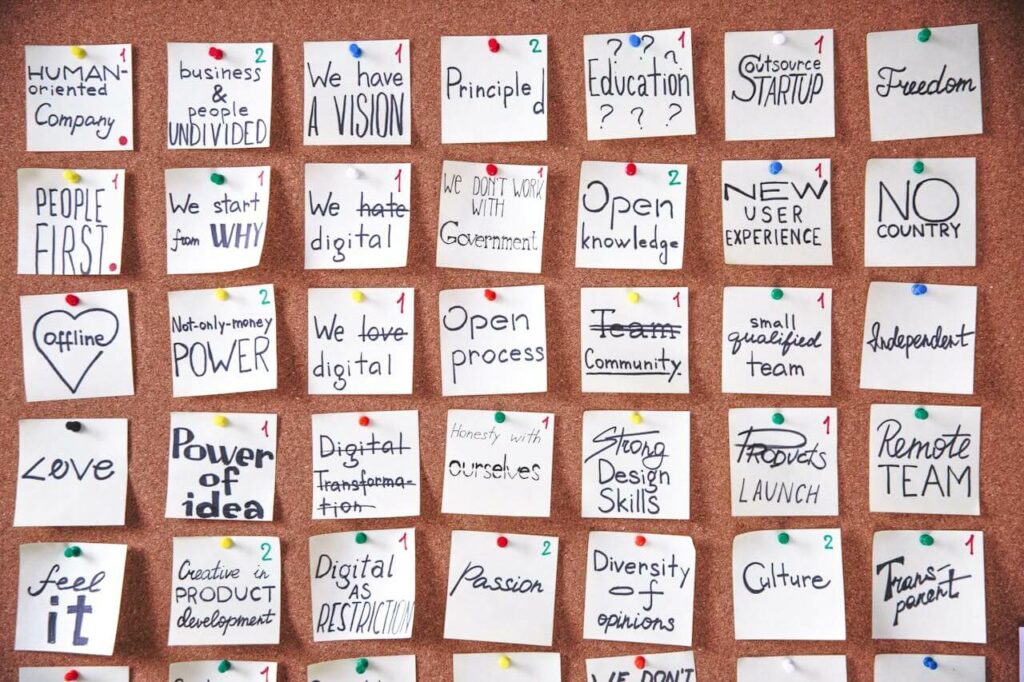Your Happiness Definition and Happiness Goal for 2025
Imagine stepping into a brand-new year with clarity, excitement, and a sense of purpose. You’re standing at the starting line of 2025, ready to embrace possibilities, growth, and joy. But before the journey begins, have you ever paused to ask yourself what happiness means to you? Have you ever found your own happiness definition?
Happiness isn’t a one-size-fits-all concept; it’s deeply personal and uniquely defined by each individual. For some, it’s a sense of peace and contentment. For others, it’s achieving long-held dreams or fostering meaningful relationships. Understanding your personal happiness definition is the first step toward living a life filled with intention and joy. Without it, finding happiness goals can feel like chasing an elusive target.
This week, we’ll explore how to uncover what happiness truly means to you, set a clear happiness goal, and plan the new year with actionable steps that align with your values. By taking time to reflect on your own version of happiness, you’ll be better equipped to build a life of personal growth and happiness, one purposeful habit at a time.
Affirm with me: “I know that I have the power to make myself happy, and I am willing to do my best!” Let’s dive in and design a year that brings your vision of happiness to life.

What Does Happiness Really Mean?
Defining happiness is the crucial first step toward finding happiness goals that can bring sustainable joy. A clear happiness definition helps create the foundation for actionable steps to build a fulfilling life. So what exactly is happiness? It’s often misunderstood as fleeting moments of pleasure or the absence of problems. However, true happiness runs much deeper—it’s about alignment with what truly matters to you, finding fulfillment, and experiencing the joy that lasts.
The Spectrum of Happiness: Hedonic vs. Eudaimonic
Happiness can take two forms: hedonic happiness, which centers around pleasure and immediate gratification, and eudaimonic happiness, which is rooted in purpose, meaning, and long-term well-being. While hedonic happiness can be a quick mood booster, eudaimonic happiness provides lasting fulfillment and is strongly linked to personal growth and happiness. Learn more about hedonic vs. eudaimonic happiness.
The Three Types of Happiness by Diener
Happiness researcher Ed Diener defines happiness through three core components:
- Life Satisfaction: How satisfied you feel with your overall life.
- Positive Emotions: The presence of joy, gratitude, and excitement.
- Low Negative Emotions: Minimizing stress, anxiety, and sadness.
Balancing these three types helps you understand what happiness means to you and allows you to craft a life that feels whole and balanced.
The PERMA Model of Well-Being
Developed by psychologist Martin Seligman, the PERMA model highlights five pillars of happiness and well-being:
- Positive Emotion: Feeling joy and optimism.
- Engagement: Being deeply involved in activities that challenge and fulfill you.
- Relationships: Fostering meaningful connections.
- Meaning: Finding purpose in what you do.
- Accomplishment: Setting and achieving goals.
Using PERMA as a guide, you can define your happiness goal and start taking small but impactful steps to integrate these elements into your life.
Read more about the PERMA model of well-being.
The Three P’s of Happiness
Another framework by Dan Buettner highlights the “three P’s” of happiness:
- Pleasure: Simple joys like good food or laughter.
- Purpose: Actions that bring meaning to your life.
- Pride: It’s about evaluating how satisfied we are with our accomplishments, circumstances, positions, and life in general.
What Happiness Means to You
Before you begin the quest of finding happiness goals that resonate with you, you must figure out what happiness means to you. Here’s a thought: What happiness means to you may be entirely unique. For one person, it might be a peaceful life surrounded by nature, while for another, it could be meaningful relationships or achieving professional success. Understanding your version of happiness is essential to finding happiness goals that truly resonate.
Shawn Achor, a happiness researcher, describes happiness as “the joy you feel moving toward your potential.” This definition ties together the journey of personal growth and happiness with the joy of striving for what matters most.
By reflecting on these various definitions, you can better understand and clarify your own happiness goal. This will allow you to plan the new year in a way that aligns with your values, paving the way for a year filled with purpose, balance, and joy.

Defining Your Happiness: The Key to Personal Growth and Fulfillment
To create a truly joyful life, you must begin with a clear happiness definition. Why? Because understanding what happiness means to you, why you seek it, and when you want to achieve it lays the groundwork for intentional living. Let’s explore the importance of defining happiness and finding happiness goals that truly resonate.
Why Define Happiness?
Defining happiness is crucial for several reasons:
- Clarity Leads to Action
Without a clear definition, happiness becomes an abstract and elusive concept. When you know precisely what you’re aiming for, it’s easier to identify the steps needed to achieve it. This clarity transforms vague aspirations into concrete actions. - Alignment With Values
Your happiness goal should align with your personal values and priorities. When your actions resonate with your core beliefs, you’re more motivated to pursue them and more likely to succeed in your journey. - Guidance for Personal Growth
Defining happiness offers a roadmap for personal growth and happiness. It helps you identify what matters most, whether it’s inner peace, strong relationships, or professional success.
Take a moment to reflect on these essential questions:
- What does happiness mean to me? Is it freedom, connection, or inner peace?
- Why do I want to be happy? How will happiness enhance my life and the lives of those around me?
- When do I want to be happy? Setting time frames creates a sense of urgency and focus, enabling you to prioritize the actions that lead to joy.
Exercise: Define Your Happiness
This week, take time to delve deeply into your vision of happiness. Use a journal or planner to document your thoughts. Follow these steps:
- Define Your What
Reflect on what happiness means to you. Is it the ability to live without fear or worry? Is it meaningful connections with loved ones? Or perhaps it’s achieving financial independence or career success. Write down everything that resonates with you. - Understand Your Why
Why do you want to be happy? Explore your deeper motivations. For example, you might want to find happiness to create a positive environment for your family, improve your mental health, or unlock your potential for success. Understanding your “why” provides the drive to overcome obstacles. - Set Your When
Establish realistic time frames for your happiness milestones. Break this into short-term, mid-term, and long-term goals. For instance:- Short-term: Practice daily gratitude to boost your mood this week.
- Mid-term: Build stronger relationships by scheduling regular family dinners over the next three months.
- Long-term: Create a career plan to align your job with your passion within the next year.
By answering these questions and performing this exercise, you’ll create a personalized roadmap for your happiness goal. This clarity not only helps you plan the new year but also ensures your efforts are focused on actions that truly matter, paving the way to personal growth and happiness. Remember, happiness is not one-size-fits-all—it’s deeply personal and entirely achievable when you know exactly what it looks like for you.

Measuring Your Current Happiness Levels
Before you embark on the journey of achieving your happiness goals, it’s important to know where you are starting from. By measuring your current levels of happiness, you can gain valuable insights into areas that require improvement and identify strengths you can build upon. Let’s take the first step together and assess your well-being using scientifically validated tools and exercises.
Use the PERMA Well-Being Questionnaire
The PERMA model by Dr. Martin Seligman highlights five key components of well-being: Positive emotions, Engagement, Relationships, Meaning, and Accomplishments. These elements provide a comprehensive picture of your overall happiness.
Head over to the PERMA Well-Being Questionnaire on the Authentic Happiness website to evaluate your current state of well-being. Record your scores for each of the following areas:
- Positive Emotions: How often do you feel joy, gratitude, or serenity in your daily life?
- Engagement: Are you deeply absorbed in activities you find meaningful or enjoyable?
- Relationships: How strong and supportive are your connections with others?
- Meaning: Do you feel your life has a purpose and aligns with what matters most to you?
- Accomplishments: Are you satisfied with what you’ve achieved, and do you set goals that inspire you?
Write down your results in a journal or planner. These scores will serve as a baseline for your journey toward finding happiness goals and understanding what happiness means to you.
Sort Out Your Priorities
Once you have your happiness definition and baseline scores, it’s time to evaluate your life’s priorities. This exercise will help you identify areas that may need more attention and effort to achieve personal growth and happiness.
Exercise: Sort Out Your Priorities
Take out your notebook or planner and create a chart with the following areas of life:
- Personal: Includes self-love, mental health, and relationships.
- Career: Your job satisfaction, professional goals, and work-life balance.
- Health: Physical well-being, fitness, and energy levels.
- Finances: Budgeting, savings, and financial security.
- Personal Growth: Learning new skills, hobbies, or pursuing passions.
- Time Affluence: Having enough free time to enjoy life.
- Education: Ongoing learning and intellectual development.
- Other: Any additional areas specific to your life.
For each category, answer the following questions:
- Priority Number: On a scale of 1-10, how important is this area to your overall happiness?
- Current Status: How satisfied are you with this area of your life right now?
- Does This Area Require Improvement?: Yes or No.
- How Can I Improve It?: Write down specific actions you can take to enhance this area.
Example:
- Personal: Priority Number: 9 | Current Status: 6 | Requires Improvement: Yes | Action Plan: Schedule weekly self-care routines, practice mindfulness, and strengthen connections with loved ones.
- Career: Priority Number: 8 | Current Status: 5 | Requires Improvement: Yes | Action Plan: Update resume, explore opportunities aligned with passions, and set professional growth goals.
- Health: Priority Number: 10 | Current Status: 7 | Requires Improvement: Yes | Action Plan: Exercise 3 times a week, prepare nutritious meals, and establish a consistent sleep routine.
By completing this exercise, you’ll have a clear understanding of where you need to focus your energy to plan the new year effectively. This process ensures that your efforts are aligned with your unique happiness definition, helping you craft a life that resonates with your values and aspirations.

Planning Your Perfect Year
Now that you’ve explored your happiness definition and identified areas for improvement, it’s time to design a roadmap for your best year yet. By setting meaningful goals and aligning them with your values, you’ll create a life filled with purpose, joy, and growth. This process will help you turn your dreams into actionable steps, ensuring 2025 becomes the year you’ve always envisioned.
Breaking your happiness goals into specific categories can provide clarity and focus. Use this structure to organize your ambitions:
Personal: Self-love and Relationships
- What to Do: Commit to self-care practices, such as journaling, mindfulness, or meditation. Strengthen relationships by scheduling regular quality time with loved ones.
- Why It Matters: Self-love boosts your confidence and resilience, while strong relationships provide emotional support and foster personal growth and happiness.
- Exercise: Write down one self-love activity and one relationship goal for each month. For example:
- January: Begin a gratitude journal (self-love) and have weekly phone calls with a close friend (relationships).
Career: Get a Meaningful Job
- What to Do: Reflect on your current role. Does it align with your passions and strengths? If not, explore new opportunities.
- Why It Matters: Using your signature strengths, such as creativity, kindness, or leadership, in your daily work fosters purpose and fulfillment. Aim to find a role that also allows for flow, the state of being fully absorbed in meaningful tasks.
- Exercise: List three ways to integrate your strengths into your current role or steps to pursue a new job aligned with your values.
Health: Nourish Your Body and Mind
- What to Do: Commit to the pillars of health—exercise, nutrition, sleep, relaxation, and joy.
- Why It Matters: A healthy body supports a happy mind. Incorporating wellness routines directly contributes to personal growth and happiness.
- Exercise: Plan daily health-focused habits. For example:
- Morning: 15 minutes of stretching or yoga.
- Afternoon: Prepare a nutrient-rich lunch.
- Evening: Reflect on the day with a gratitude practice.
Finances: Build Stability and Freedom
- What to Do: Set a savings goal, create a budget, or eliminate unnecessary expenses.
- Why It Matters: Financial stability reduces stress and creates opportunities for growth and joy.
- Exercise: Use a budgeting app to track expenses and allocate funds to your goals, such as travel or personal growth courses.
Personal Growth: Learn and Expand
- What to Do: Choose a skill or hobby you’ve always wanted to explore and dedicate time to it each month.
- Why It Matters: Learning boosts self-esteem and fosters a sense of accomplishment, aligning with your happiness goals.
- Exercise: Research local or online classes and sign up for at least one by the end of January.
Time Affluence: Create Space for Joy
- What to Do: Free up your schedule by prioritizing activities that align with your values and saying no to unnecessary commitments.
- Why It Matters: Having control over your time increases well-being and reduces stress.
- Exercise: Block off time in your calendar for non-negotiable joy, such as reading, hiking, or spending time with loved ones.
Education: Invest in Knowledge
- What to Do: Commit to learning something new every month, whether it’s reading a book, taking a course, or attending a seminar.
- Why It Matters: Expanding your knowledge enhances both personal and professional growth, contributing to long-term happiness.
- Exercise: Write down one learning goal for each quarter of the year.
Other: Your Specific Goals
- What to Do: Outline any other goals that you may have and write down the steps to achieve them.
- Why It Matters: Pursuing passions outside of structured goals adds depth and variety to your life.
- Exercise: Create a vision board with images that represent your dreams for 2025.
Monthly Goal Setting
Once you’ve outlined your big-picture goals, break them down into actionable monthly objectives. This method ensures you stay on track and can celebrate small wins along the way.
Example (January Goals):
- Personal: Start a daily gratitude practice.
- Career: Update your resume and research meaningful job opportunities.
- Health: Commit to three workout sessions per week.
Remember, these examples are meant to inspire you as you create your happiness goals. However, your focus should remain on the areas of life that genuinely require improvement. If you find that only one area, such as your career or health, needs attention, prioritize it and let go of the pressure to add more. On the other hand, if you are content with all aspects of your life, congratulations! In that case, your goal should simply be to maintain the current satisfying situation and continue nurturing the joy you’ve already cultivated. The key is to create a plan that feels meaningful and achievable for your unique journey.

Simple, Realistic Activities to Make 2025 Amazing
Small, thoughtful changes often have the most profound impact on our lives. By sprinkling simple activities throughout your year, you can create moments of joy, deepen connections, and enhance your overall sense of fulfillment. Here are just a few examples of how you can make each month even more special. However, feel free to choose simple, realistic activities that resonate most with you and align with your unique happiness goals to create a year filled with joy and meaning.
January: Start a Gratitude Journal
Begin the year by reflecting on daily joys. Each evening, write down three things you’re grateful for, no matter how small. This practice helps you focus on positivity and aligns with what happiness means to you.
February: Plan a Cozy Gathering or Romantic Date
Celebrate love and connection by planning a special outing with friends or a partner. Whether it’s a homemade dinner or a movie night, meaningful relationships contribute significantly to happiness.
March: Embrace the Outdoors with a Hike
Welcome spring with a refreshing hike or walk in nature. Physical activity paired with time in the outdoors nurtures both your body and mind, supporting your happiness definition and overall well-being.
April: Start a Gardening Project
Plant flowers, herbs, or even vegetables. Gardening is a therapeutic activity that promotes mindfulness and offers a sense of accomplishment, enriching personal growth and happiness.
May: Explore New Flavors with Seasonal Recipes
Try cooking with fresh, seasonal produce. This simple activity not only boosts your culinary skills but also encourages healthy eating habits that enhance energy and mood.
June: Attend an Outdoor Concert or Festival
Enjoy the warmth of summer by immersing yourself in music or art. Community events foster a sense of belonging and are a great way to explore what happiness means to you.
July: Take a Day Trip
Explore a nearby town or attraction you’ve never visited. These micro-adventures are a simple way to break routine, spark curiosity, and deepen your happiness definition.
August: Unplug for a Weekend
Take a break from screens and reconnect with the present moment. Use this time to journal, meditate, or spend quality time with loved ones. This exercise will help you stay aligned with your happiness goals.
September: Focus on Personal Growth
Attend a workshop or take a course that aligns with your passions. Investing in your growth not only enhances skills but also builds confidence and fulfillment.
October: Get Festive with Fall Decorations
Decorate your home with autumn-themed decor. Creating a cozy, inviting space fosters warmth and joy, enhancing your sense of comfort and well-being.
November: Reflect on Gratitude
As the year begins to wind down, take time to reflect on what you’re grateful for. Write thank-you notes to people who’ve made an impact on your life, cultivating stronger connections and emotional warmth.
December: Set Intentions for the New Year
Look back on your 2025 journey. Celebrate your achievements and identify areas for growth as you plan the new year ahead. Reflect on personal growth and happiness and set meaningful goals for 2026.
Making Your Year Unforgettable
By integrating these simple activities into your routine, you’ll create moments that align with your values and aspirations. These small but powerful steps are a wonderful way to achieve your happiness goals, plan the new year, and focus on what happiness means to you.
Let’s make 2025 a year to remember—one filled with joy, purpose, and personal growth!

Conclusion: Let’s Create a Happy Life Together
Happiness is not just a destination—it’s a journey of growth, purpose, and intention. By crafting your own happiness definition, measuring your current baseline, and setting actionable happiness goals, you’re laying the foundation for a truly fulfilling life. Whether your aim is to focus on personal growth and happiness or to plan the new year with clarity and purpose, each small step brings you closer to the life you deserve.
This happiness program is designed to support you every step of the way. Ready to transform your goals into lasting habits and joy? Take the first step and join us today. Together, we’ll create the tools you need to achieve your dreams and create a happy life filled with meaning and positivity!

Resources
The information in this article is grounded in scientific research. If you’re interested in specific studies, feel free to reach out to us.
For daily doses of joy, positivity, inspiration, and motivation, be sure to follow us on Instagram.
Za naše bralce v Sloveniji
Če vas zanima več o psihoterapiji in iskanju trajne sreče, preberite naslednje članke: Psihoterapija Obala, 5 ključev do trajne sreče in notranjega miru, Najboljši psihoterapevti v Sloveniji: Kako se hitro spopasti s stresom, Psiholog v Kopru: Kako odpraviti težave s psihoterapijo in RTT terapijo, in Psihoterapija Online: Prednosti in učinkovitost terapije na daljavo.


